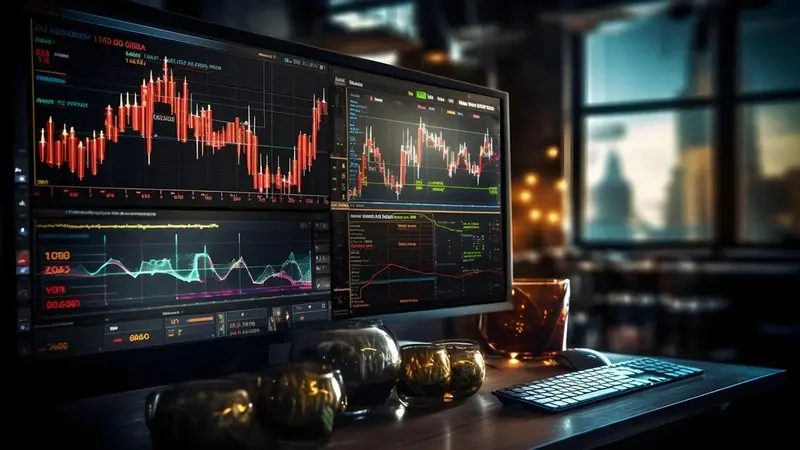Precious metal trading has gained popularity as an investment choice due to its potential for profit and ability to diversify portfolios. Traders interested in analysing their strategies can benefit from backtesting to see how a trading plan would have performed based on historical data. For those using platforms like the MT5 download, backtesting is a valuable tool that helps refine strategies before they are implemented in live markets. This article explores how backtesting can improve trading outcomes, the steps to carry out effective backtests, and tips to maximise results.
What is Backtesting in Precious Metal Trading?
Backtesting is a method used to evaluate a trading strategy’s performance based on historical price data. It allows traders to test a trading plan and understand how it would have fared over a specific time period without risking real money.
By analyzing past data, traders can see if their strategies align with desired outcomes, making adjustments where necessary. In the realm of precious metal trading, backtesting can offer insights into how metals like gold, silver, and platinum respond to market trends.
Steps to Start Backtesting with a Precious Metal Trading App
- Set Clear Goals and Parameters
Before starting the backtesting process, traders should set specific goals for what they aim to achieve. This might include profit targets, acceptable risk levels, or desired win rates. Defining these objectives provides clarity and helps assess if the trading strategy meets expectations.
- Select the Appropriate Time Frame
The choice of time frame is critical when backtesting. Different time frames yield different results; for instance, testing over a short time frame may reveal how the strategy performs in volatile markets, while longer time frames may show its stability over time.
Traders need to consider the typical behaviour of precious metals, which often experience fluctuations due to market news, economic indicators, and currency movements. Choosing a time frame that mirrors real trading scenarios can make the backtest more reliable and help set realistic expectations.
Utilising MT5’s Historical Data for Backtesting
With the MT5 download, traders can access historical data that’s necessary for accurate backtesting. MT5 provides comprehensive data, allowing traders to view past prices, trading volumes, and trends for a wide range of precious metals. By using this data, traders can simulate real market conditions and test their strategy against historical events.
Historical data can uncover hidden patterns in the precious metals market. For example, gold often reacts to changes in the US dollar, while silver prices may vary with industrial demand. Using historical data, traders can fine-tune their strategies to account for these recurring trends, ensuring a more robust backtesting outcome.
Analysing Backtest Results and Identifying Patterns
After completing a backtest, traders must carefully analyse the results. This involves looking at key metrics, such as profit and loss, win rate, drawdown, and return on investment. Analyzing these metrics can indicate the strengths and weaknesses of a strategy and reveal areas that need modification.
By identifying recurring patterns in the results, traders can better understand how their strategy aligns with the typical behaviour of precious metals. Recognising these patterns enables traders to adjust their approach, refine entry and exit points, and make decisions based on evidence rather than speculation.
Adjusting and Refining Strategies Based on Backtest Outcomes
Backtesting is not a one-time process; it’s a cycle of testing, analysing, adjusting, and re-testing. After reviewing initial backtest results, traders should make necessary changes to their strategy. For instance, if a particular exit point proves ineffective, adjusting the exit conditions and re-testing can lead to better outcomes.
This iterative process helps traders to improve their approach continually. By testing various configurations and fine-tuning the strategy, traders can achieve a version that performs consistently across different market conditions.
Backtesting Strategies for Short-Term vs. Long-Term Trading
The choice of strategy depends on the trader’s goals. For those focusing on short-term trading, a backtest can reveal how effective the strategy is in quick market movements and high volatility. Short-term traders need to pay attention to entry and exit timing, as precious metals can experience rapid changes in value.
Long-term traders, however, look for stability and sustained profitability over longer periods. A backtest in this scenario will show how the strategy performs in different economic cycles and assess if it can withstand market downturns. By distinguishing between short- and long-term approaches, traders can tailor backtesting to their specific goals.
Backtesting is an essential tool for anyone involved in precious metal trading. By using a reliable desktop trading app like MT5, traders can simulate and analyse strategies based on historical data, gain insights, and make necessary adjustments. From setting goals to analysing results and refining approaches, backtesting offers a structured path to more informed trading. With careful analysis and consistent adjustments, traders can optimise their strategies for the unique characteristics of precious metals and increase their chances of trading success.




